Unexpected Dream Bell of Happiness
Seeking the Manpa, finding the Dream Bell of Wakaura.
by Bob Kerstetter
No Place in Your Mind
Colored in burnt-red with mirrors reflecting its surroundings, the Dream Bell appears to blend historic bricks with new ones. The newer provide structural integrity. The older add subtle meaning to the poetic message of the bell.
Discovering another dream bell never entered your mind as you searched for a bygone beach-side resort in Wakayama City, Japan. Letters penned an by international visitor to Japan in the mid 20th Century mentioned the hotel. Because of your research and writing project, you hope to locate the Manpa Resort or its remnants to learn about its history.

The Dream Bell sits on top a naturally occurring stone mound on the shores of Wakaura Bay.
Help from a Curator
A curator at the Wakayama City Museum assists you in your Manpa hunt by correcting the wrongly-placed X on your map. The new X, he says, marks the spot.
During your conversation, he also explains city trains, the Makurazaki typhoon and the fire bombing of Wakayama City in July 1945. You connect at a friendship level. He says you think like a Japanese person. You doubt that, but thank him by bowing too deeply. You then head toward the famous Wakaura Bay.
Wakaura
Walking along and upward on Highway 151, you pass a roadway bridge. It once skirted the south side of a steep hill. Not much of the bridge remains. Moving on, you step into an abandoned one-lane tunnel cutting through the same hill. The tunnel today serves as covered parking for nearby residences or businesses, maybe both. Cars, bicycles, motorbikes and pedestrians, plus other thru-traffic, move through an adjacent and wider underground passage. You turn away from the old tunnel and continue upward through the new.
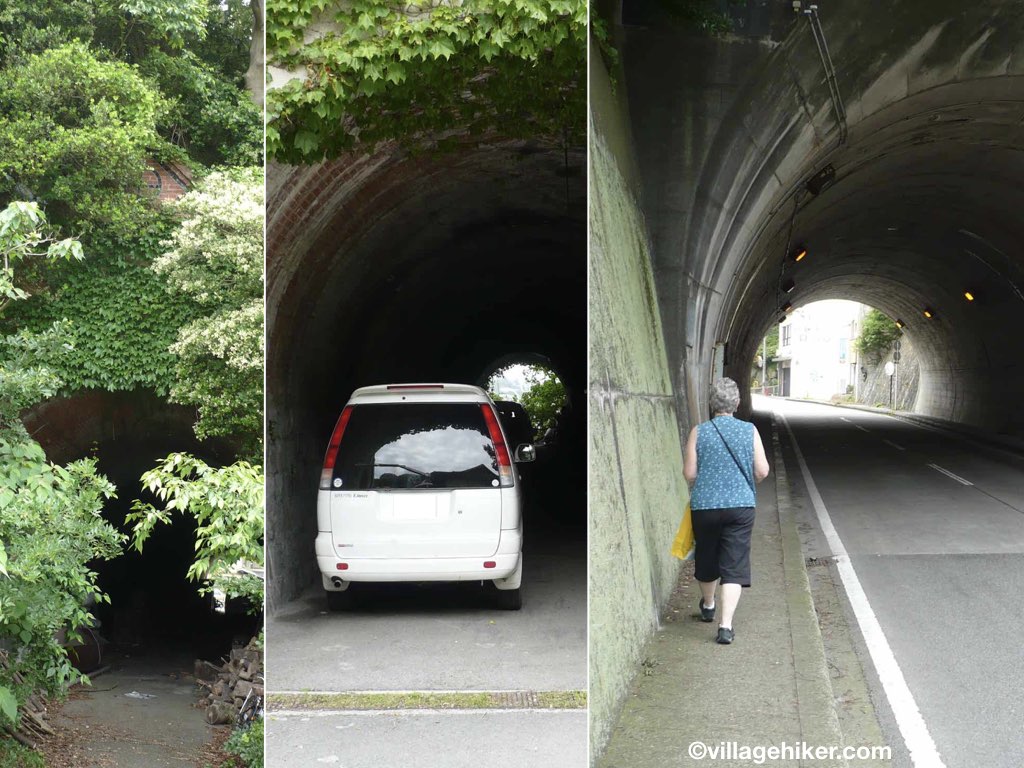
One-lane tunnel (looking from east and west) and two-lane tunnel.
The Manpa Resort
The luxurious Manpa Resort overlooks Wakaura Bay—maybe 25 or 30 meters above the beach. You are in a country of metric measurements and attempt to adapt.
Everyone in the lobby wears shoes, so no need to remove yours.
You are underdressed. No one cares. You are in polite Japan—very polite to international visitors.
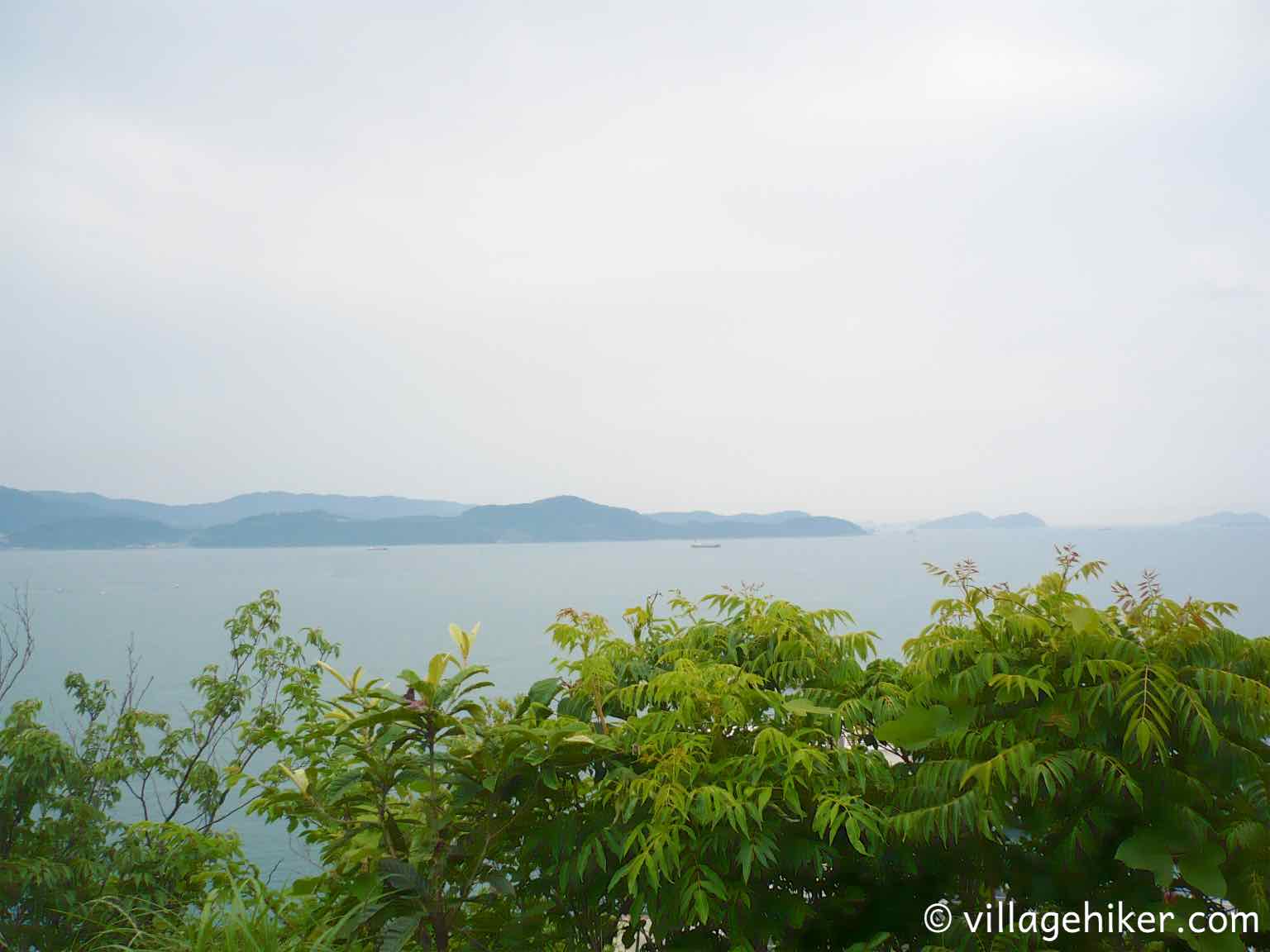
Mountains and greenery frame Wakaura Bay near the Manpa Resort.
No one at the front desk knows about the old Manpa. Nor do a half-dozen other staff and managers summoned from the office, kitchen and who-knows-where-else. The extreme helpfulness of Japanese people embarrasses you. You wonder why.
A Burnt-Red Wall
Outside in light rain, steep wet steps—textured to prevent slipping—descend to a walking trail along the beach. Near the bottom, you see a burnt-red brick wall. Ivy clings to large sections. Before you stands the remains of the old Manpa. The new X definitely marks the spot. The ruins sit on solid green schist, the same foundation supporting the new Manpa.
Your language skills in the lobby of the new Manpa obviously fell short when communicating with the Japanese hospitality staff. 私はばかです。"I am an moron," you say to yourself.
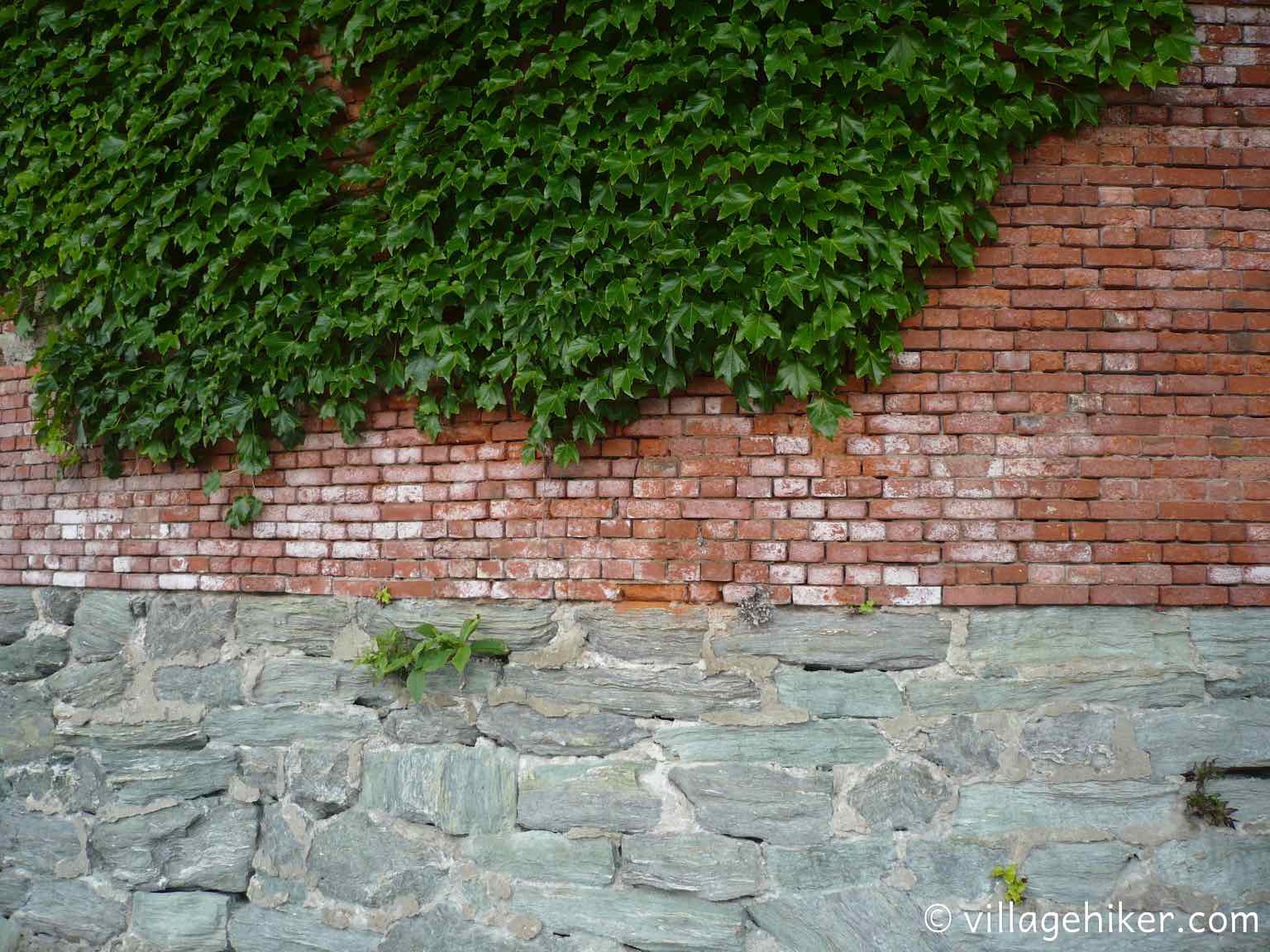
Burnt Red Brick Wall of Old Manpa Hotel.
The burnt-red bricks wrap around the beachside rock hill sitting beneath the Manpa. A paved walking trail follows the wall. No longer needed, some old Manpa bricks lay in clumps between the walkway and the rock hill. Others slosh around in the surf, gradually reshaping themselves into eggs and worry stones. In a short distance, the walking trail blends into the beach. Ahead you see the Dream Bell.
A Familiar Idea from Mt. Tenjo
Although the design looks totally different, the concept you recognize from a bell you encountered on Mt. Tenjou north of Mt. Fuji. The idea is nice. Ring the bell while viewing Fuji-san. Your wishes come true.
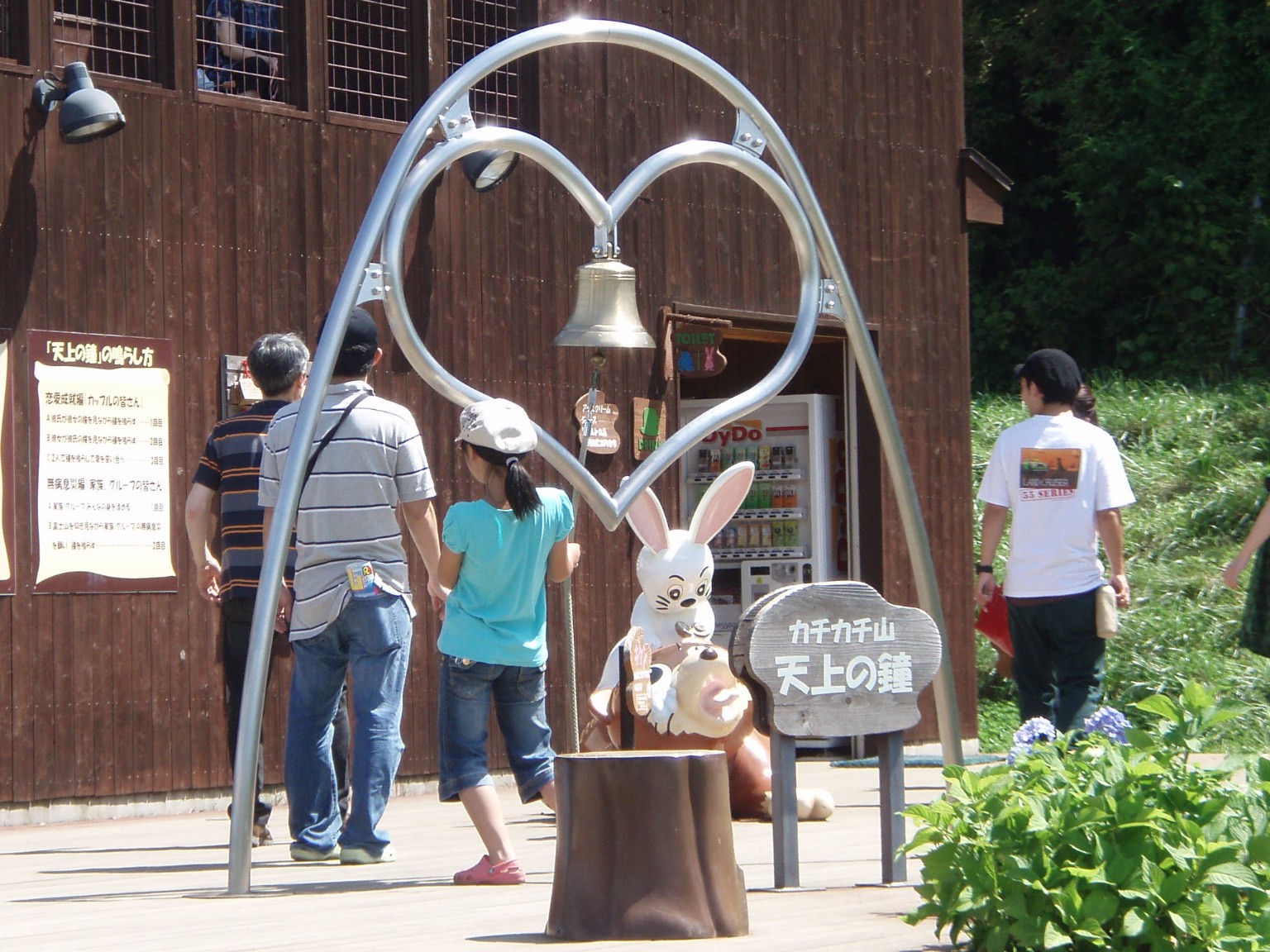
Your first dream bell sits on Mt. Tenjou opposite Mt. Fuji. Finding a second dream bell never crossed your mind.
Dream Bell of Wakaura
From its appearance, the Dream Bell of Wakaura appears to incorporate burnt-red bricks from the old Manpa. Maybe. Maybe not.
Whatever the case, the bell comes with instructions.
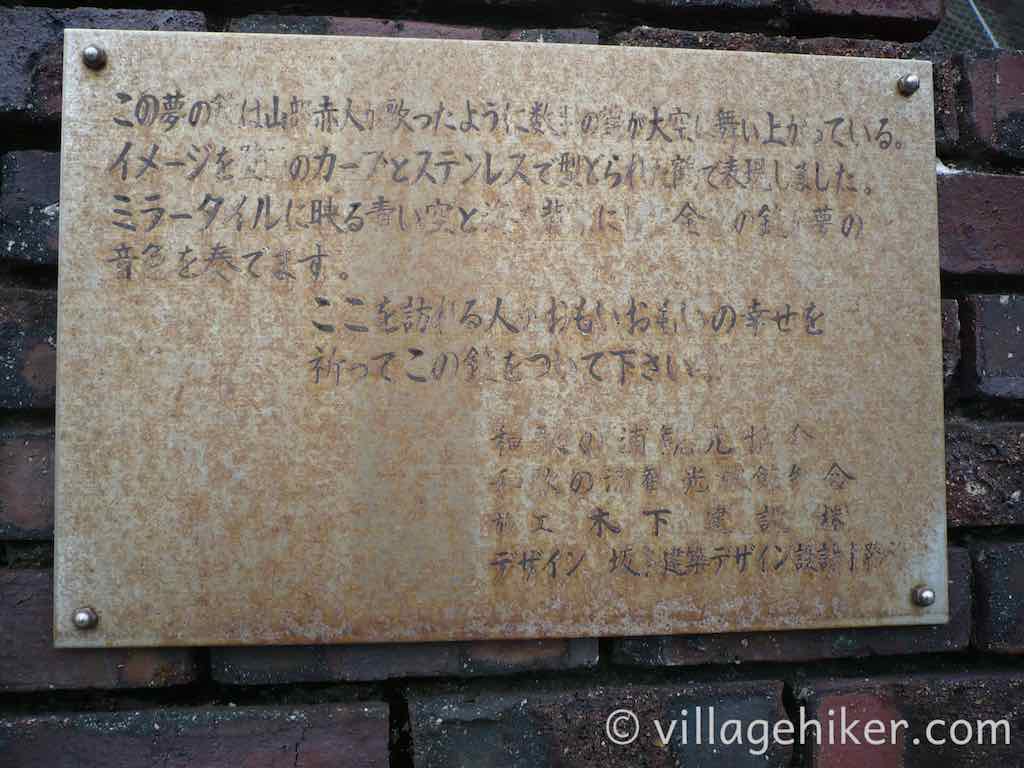
The sign briefly tells the Dream Bell story.
While you cannot read the sign, you later learn what it says.
Ringing the bell brings unique happiness to each person.
When the bell makes its beautiful tone, the crane on top symbolically soars away. Blue-sky happiness comes to you in day or night, clear or cloudy, calm or stormy. The bell helps satisfy your dreams. It gives you happiness.

Ringing the bell brings happiness in your own way.
Imagery from a Tanka
This imagery of the bell comes in a Japanese way from a tanka—a short poem—written by Yamabe no Akahito (山部 赤人).
Yamabe no Akahito wrote poetry for the imperial court during the Nara era of Japanese history. He wrote many poems while traveling from 724 through 736 with Emperor Shoumu. Some of the poems he penned at Wakaura, also known as Wakanoura or Wakanura.
Inspired by the cranes at Wakaura, Yamabe no Akahito created this tanka, roughly translated:
At Wakanura
Rising tides
cover shoal.
Moving toward reedy shores
cranes cross lamenting.
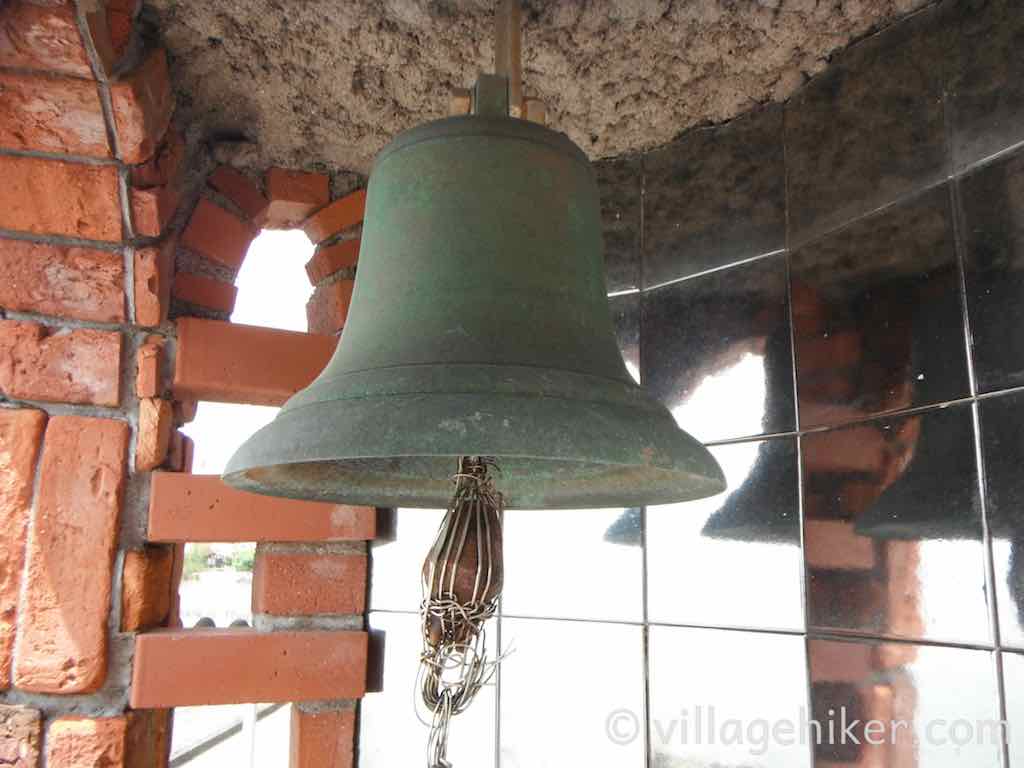
The ringing bell causes a crane to fly into blue skies and gives the ringer happiness.
The poem in hiragana reads:
わかのうらに
しおみちくれば
かたをなみ
あしべをさして
たずなきわたる
In westernized romaji, the poem says:
wakanoura ni
shio michikureba
kata wo nami
ashibe wo sashite
tazu nakiwataru
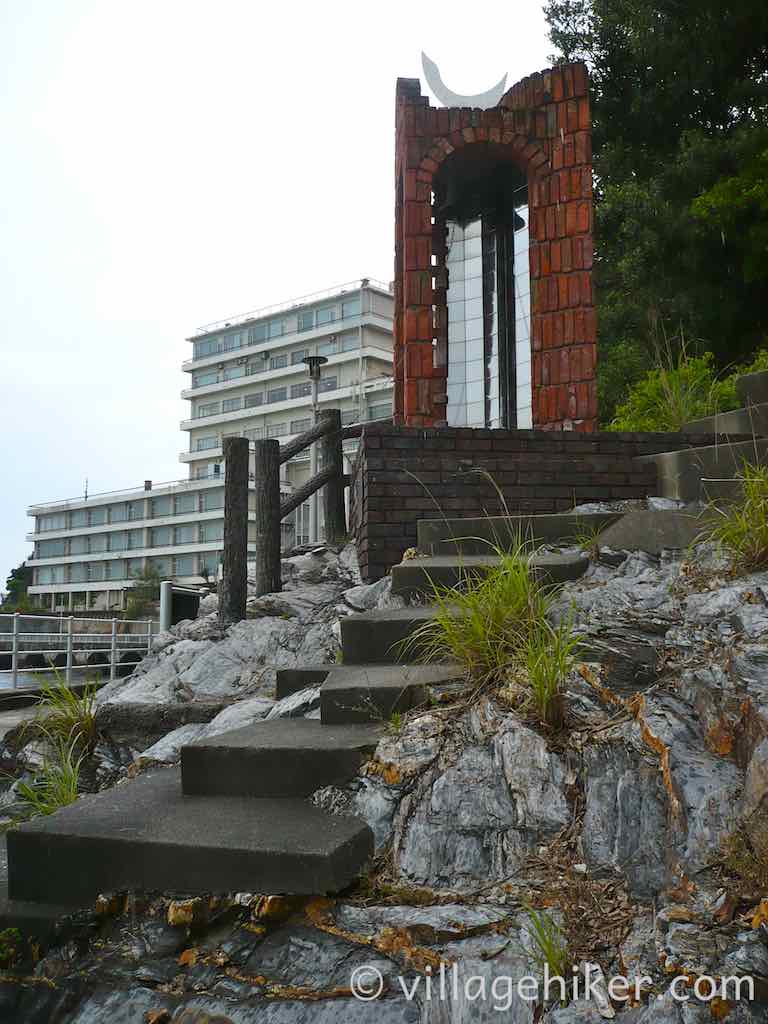
The crane waits ready to symbolically fly above the Dream Bell.
Tanka Meaning: Loss and Gain
Cranes in the tanka fly and call while seeking a place to rest. They wing toward shoreline reeds after rising tides flood the shoal. While some westerners interpret this poem as melancholy or lonely or both, it possibly conveys both sadness and happiness as the cranes escape the rising tides, knowing loss followed by gain.
This poem appears in the first anthology of Japanese poetry. Titled Collection of Ten Thousand Leaves or Manyoushuu—まんようしゅう in hiragana and 万葉集 in kanji—the anthology was published during the 8th Century.
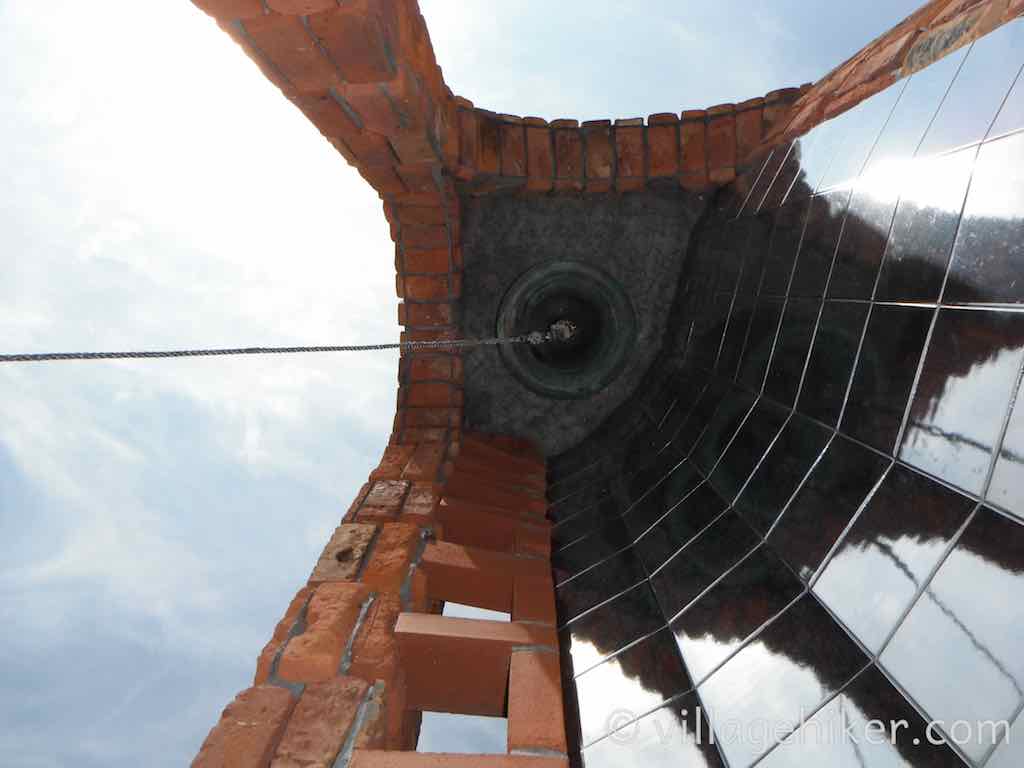
Ring the bell for blue-sky happiness in all types of weather.
An Inspirational Bay
Wakaura Bay for many centuries inspired the works of poets, musicians and artists. Inspiration continues today. The bay attracts both Japanese and international visitors who wish to absorb eureka moments and peace from the tranquil surroundings.
Wakayama City sits on the western coast of the Kii Peninsula, a short distance north of where the Pacific Ocean meets the Inland Sea of Japan. Once known as Kinokuni—the place of forests—Wakayama serves as the capital of Wakayama prefecture. During the Tokugawa Shogunate, the ruling family used Wakayama City as one of its centers of power.
Wakayama City constructed the Dream Bell in 1975 to help visitors enjoy the artistic history of Wakaura Bay.
Plus, ringing the bell brings happiness. After all, you found the Manpa of your dreams.